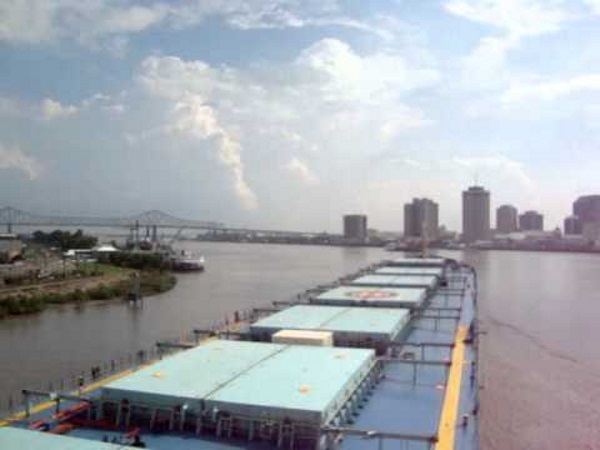China’s Iron Ore Imports Could Offer Some Respite in the Dry Bulk Market
 A boost in dry bulk demand, mainly from China, would go a long way into alleviating fears of a new crash in the dry bulk market. In fact, signs over the first few months of the year had been encouraging. In a recent report, shipbroker Banchero Costa said that “iron ore trade remains remarkably resilient this year, at least in Asia, despite the global economic impact from COVID-19. In the first 4 months of 2020, Mainland China imported 342.4 mln tonnes of iron ore by sea, according to vessel tracking data from Refinitiv. This represents a net increase of +3.3% y-o-y, compared to the 331.5 mln tonnes imported in the same four-month period of 2019, although only up +0.6% from the 341.0 mln tonnes imported in the same period of 2018.
A boost in dry bulk demand, mainly from China, would go a long way into alleviating fears of a new crash in the dry bulk market. In fact, signs over the first few months of the year had been encouraging. In a recent report, shipbroker Banchero Costa said that “iron ore trade remains remarkably resilient this year, at least in Asia, despite the global economic impact from COVID-19. In the first 4 months of 2020, Mainland China imported 342.4 mln tonnes of iron ore by sea, according to vessel tracking data from Refinitiv. This represents a net increase of +3.3% y-o-y, compared to the 331.5 mln tonnes imported in the same four-month period of 2019, although only up +0.6% from the 341.0 mln tonnes imported in the same period of 2018.
According to Banchero Costa, “on a single-month basis, January 2020 was flat year-on-year with a +0.1% increase to 92.6 mln tonnes, whilst February 2020 showed a -15.5% m-o-m decline and a -3.5% y-o-y decline to 78.2 mln tonnes. March 2020 recorded a +9.4% increase m-o-m from February but still a -3.3% year-on-year contraction to 85.6 mln tonnes. In April 2020 arrivals increased further to 86.1 mln tonnes. This was +0.6% month-on-month from March 2020, and a massive +23.8% year-on-year compared to April 2019. However, there are some important caveats here. In fact, at least for now, the pandemic seems to be less of a disruptive factor for global iron ore trade than the two “black swans” we had in a disastrous 2019”.
The shipbroker added that “the Brumadinho dam disaster in Brazil in January 2019 significantly impacted Vale’s iron ore export capacity last year, leading to a spike in iron ore prices, which essentially doubled between January and June. The biggest impact on Vale’s loadings last year was in March and April when there was uncertainty about other potential mine closures, and a reshuffling of Vale’s management and operations. Brazilian exporters as a whole shipped just 23.7 mln tonnes in March 2019, which was down -19.5% year-on-year, and then 17.2 mln tonnes in April 2019, which was down -37.6% year-on-year”.
According to Banchero Costa, “the second hit last year came from Tropical Cyclone Veronica in March 2019. Port Hedland, the most valuable export hub in Australia and one of the largest iron ore loading ports in the world, was forced to close for several days. Rio Tinto’s Cape Lambert port wharf also sustained damage from waves generated by the cyclone. Iron ore imports to China this year are still predominantly from Australia, which also this year accounts for 68% of China’s total. Shipments from Australia to China have increased by +9.6% y-o-y in Jan-Apr 2020, to 233.7 mln tonnes, from 213.3 mln tonnes in the same period last year, and are also +3.1% higher than in 2018. Arrivals from South Africa to China are up +12.1% y-o-y from 2019 to 14.7 mln tonnes. They are +26.1% up from the same period in 2018. Shipments from the Ukraine are up by +138.6% y-o-y to 4.8 mln tonnes”.
Meanwhile, “volumes from India jumped by +409.0% y-o-y to 4.1 mln tonnes. Those from Canada are +16.6% y-o-y to 4.1 mln tonnes. Arrivals from Brazil, on the other hand, are down -15.3% y-o-y to 61.5 mln tonnes. They are also down -7.8% compared to the same period in 2018. Significantly, shipments to China from Malaysia (all transhipments of Brazilian ore) are also down by -43.9% y-o-y to just 3.6 mln tonnes. Clearly, Brazilian export capacity has not yet recovered from the Brumadinho events, and Brazil seems to be the only major ore exporter being penalized this year”, the shipbroker concluded.
Nikos Roussanoglou, Hellenic Shipping News Worldwide

 Hellenic Shipping News Worldwide Hellenic Shipping News Worldwide, Online Daily Newspaper on Hellenic and International Shipping
Hellenic Shipping News Worldwide Hellenic Shipping News Worldwide, Online Daily Newspaper on Hellenic and International Shipping























 PG-Software
PG-Software